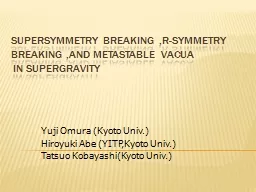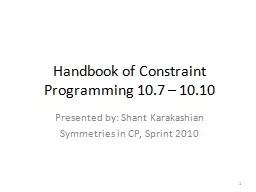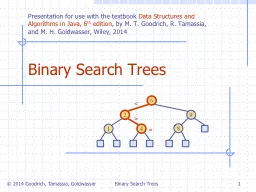PPT-Tractable Symmetry Breaking Using Restricted Search Trees
Author : alexa-scheidler | Published Date : 2016-07-29
Colva M RoneyDougal Ian P Gent Tom Kelsey Steve Linton Presented by Shant Karakashian Symmetries in CP Sprint 2010 Outline Symmetry breaking approaches Group
Presentation Embed Code
Download Presentation
Download Presentation The PPT/PDF document "Tractable Symmetry Breaking Using Restri..." is the property of its rightful owner. Permission is granted to download and print the materials on this website for personal, non-commercial use only, and to display it on your personal computer provided you do not modify the materials and that you retain all copyright notices contained in the materials. By downloading content from our website, you accept the terms of this agreement.
Tractable Symmetry Breaking Using Restricted Search Trees: Transcript
Download Rules Of Document
"Tractable Symmetry Breaking Using Restricted Search Trees"The content belongs to its owner. You may download and print it for personal use, without modification, and keep all copyright notices. By downloading, you agree to these terms.
Related Documents




![[Restricted] ONLY for designated groups and individuals](https://thumbs.docslides.com/528549/restricted-only-for-designated-groups-and-individuals.jpg)









